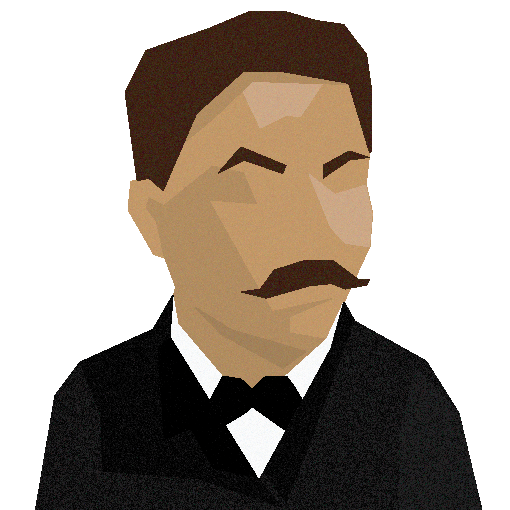Let’s face it: Philippine heroes haven’t always been the most popular subjects of local cinema. In the last decade, the number of films featuring our freedom fighters can be counted on one hand alone—a far cry from the number of mindlessly repetitive franchises the industry has produced in the same span of time.
But every now and then, a film or two emerges about the likes of Jose Rizal, Andres Bonifacio and Emilio Aguinaldo, and the public is once again captivated by their heroic deeds and struggles. In fact, just last December, Enzo Williams’ Bonifacio: Ang Unang Pangulo (2014) took home nine awards in the recently concluded Metro Manila Film Festival, including the title of Best Picture.
Undoubtedly, historical films have the ability to touch on subjects important to a nation’s identity. These movies not only entertain but also educate; it is perhaps for this reason that homegrown filmmakers have continued to experiment with bringing Philippine history to life outside the four walls of the classroom.
Unraveling the hero
Perhaps the most famous figure in our history is none other than national hero Dr. Jose Rizal. Several films about his life were released in the late 1990s, the most notable of which is Bayaning 3rd World (1999) directed by Mike de Leon. The movie follows two filmmakers as they attempt to uncover the truth behind the retraction debate surrounding Rizal’s legacy—on the eve of his execution, Rizal is said to have written a letter renouncing his views against the Catholic Church, the very institution he had so heavily criticized in Noli me Tangere (1887) and El Filibusterismo (1891).
Nestor Torre, a film critic and writer, dubbed the film an “artistic triumph” in the Philippine Daily Inquirer for its ability to transform a complex subject like Rizal into something “accessible, comprehensible and even exciting” for audiences of all ages.
Director Paolo Abella revisits this theme over a decade later in the 2012 film Jose Rizal: The First Hero. The documentary alternates interviews of Philippine history experts like Ambeth Ocampo and Dr. Paul Dumol with reenactments of pivotal moments in Rizal’s life. Praised for its academic approach, the film was also screened in Canada during the Toronto International Film Festival in 2013.
As critically acclaimed as these films were, both were poorly received by the mass Filipino audience during their local releases. Unfortunately, “those who saw it were the ones who were really interested [and] who really have this thirst for knowing Rizal,” says Francis Navarro, an assistant professor at the History Department.
Film enthusiast and Loyola Film Circle Documentation and Publication Executive Emil Hofileña echoes Navarro’s sentiments about the limited market for such films. “People nowadays are used to romantic comedies or cheap horror movies,” he shares in a mix of English and Filipino.
As a result, the problem filmmakers face is figuring out how to make the content relatable to the average Filipino who may not see how history can be a form of entertainment. In a mix of English and Filipino, Hofileña comments, “There’s a tendency to [commercialize], because even if we want to say that this is the truth about our history, we still can’t help but turn it into a positive light.”
Revealing rivalries
Filmmakers who tackle history walk a fine line between entertaining and educating audiences. According to Navarro, “interpreting facts and presenting them as if they were already like the truth sometimes tends to be very dangerous.” This is especially true for controversial people about whom we lack information and thus cannot come to a clear conclusion about; one such story that has recently sparked the interest of filmmakers is the rivalry between Bonifacio and Aguinaldo.
Certain biases and interpretations exist, depending on who is telling the story. In Supremo (2012), a film about the Father of the Katipunan, Richard Somes presents Bonifacio as a resilient revolutionary leader whose actions are based on his belief in armed struggle as the key to independence. In the same film, Aguinaldo is portrayed as being weak and inferior in comparison to Bonifacio, even succumbing to his leadership.
Mark Meily portrays these characters differently in El Presidente (2012), a film based on Aguinaldo’s personal memoirs. Here, Aguinaldo is presented in a more positive light from his childhood up till his term as president. In particular, the role he played in helping the Philippines achieve its independence is highlighted.
For Navarro, El Presidente’s portrayal of Aguinaldo was lacking. “Unfortunately, he’s one of the most vilified persons in history,” he explains, adding that this facet of Aguinaldo’s character was not explored in the film. “That’s the problem with historical movies—there’s always a tendency to romanticize, to cover up things or to forget some important details in real life, based on documents.”
Because there are instances when filmmakers sacrifice truth for creativity, Navarro expresses the need for guidance in creating films of this nature. “When making historical movies, they should always have a historical consultant who would be able to advise them on the truthfulness of the details of the movie,” he suggests. “Historical movies [should be] well-researched [and] well-documented.”
Reinventing history
Hot on the heels of Bonifacio: Ang Unang Pangulo come two other films that draw from our history: Heneral Luna, which tells the story of Antonio Luna, one of the most brilliant Filipino military men of the Philippine-American War, and horror film Tragic Theater, which features the infamous 1981 Manila Film Center accident. The release of these films bodes well for history buffs, as it proves that history might just stick around a little longer in Philippine cinema.
Despite the problem of limited viewership, the number of historical films appears to be on the rise. Navarro feels that these films will eventually make it to mainstream pop culture, specifically the unwritten controversial stories, or what he refers to as historical gossip.
“We have to popularize it. But still, by staying true to the facts, to historical details,” he says, emphasizing the need to move past popularized textbook understandings of stories and search for the truth. For him, education is the key: Getting people to know their heroes and spreading this knowledge with others.
As for Hofileña, he strongly believes that contemporary audiences desperately need historical films. “Film is not purely for entertainment,” he notes. “It’s a really powerful tool if you want to inform people, if you want to disturb people.” More than just something to pass the time, historical films can be used to make people aware of their shared history as a nation.
Hall of infamy
By Marco G. Dayrit
Illustrations by Meg C. Quintos
Love them or hate them, there are countless heroes and villains in Philippine history. From murderous artists to troubled politicians, these people led lives destined for the silver screen.

Lapu-Lapu
Lapu-Lapu may be recognized by many as the first Philippine hero for defeating Magellan in battle, but historians often dispute the story we’re familiar with—according to Antonio Pigafetta’s eyewitness account, no such one-on-one duel occurred. A film portrayal of his life could set the facts straight and be a welcome change from the usual local action fare.

Juan Luna
Known for paintings like Spoliarium and The Parisian Life, Luna had his share of turbulent times, having gone to jail for killing his wife and mother-in-law. His younger brother, Antonio Luna, already has his own biopic, Ang Taga-ilog (2011); this painter’s talent and trials make him lead character material as well.

Jose P. Laurel
Perhaps one of the most polarizing figures in all of national history, Laurel had the burden of leading the country during the Japanese occupation. Because of this, he is often called either a hero or a traitor, though there is limited proof of the latter. A strong, nuanced performance at the center of a political drama would be needed to bring justice to Laurel’s cloudy reputation.

Imelda Marcos
Her husband’s regime has already been the center of several films, such as A Dangerous Life (1988) and Dekada ‘70 (2002). The Steel Butterfly of the Philippines’ controversies, such as her expensive taste in clothes and the Manila Film Center scandal, are numerous enough to warrant her own movie. (A separate budget for shoes alone may be needed.)

![Heroes and villains alike make the big leap from history books to the silver screen [PHOTO FROM HTTPS://ANGBAGONGFILIPINO.WORDPRESS.COM]](https://theguidon.com/1112/main/wp-content/uploads/2015/02/Philippine-Heroes.jpg)





